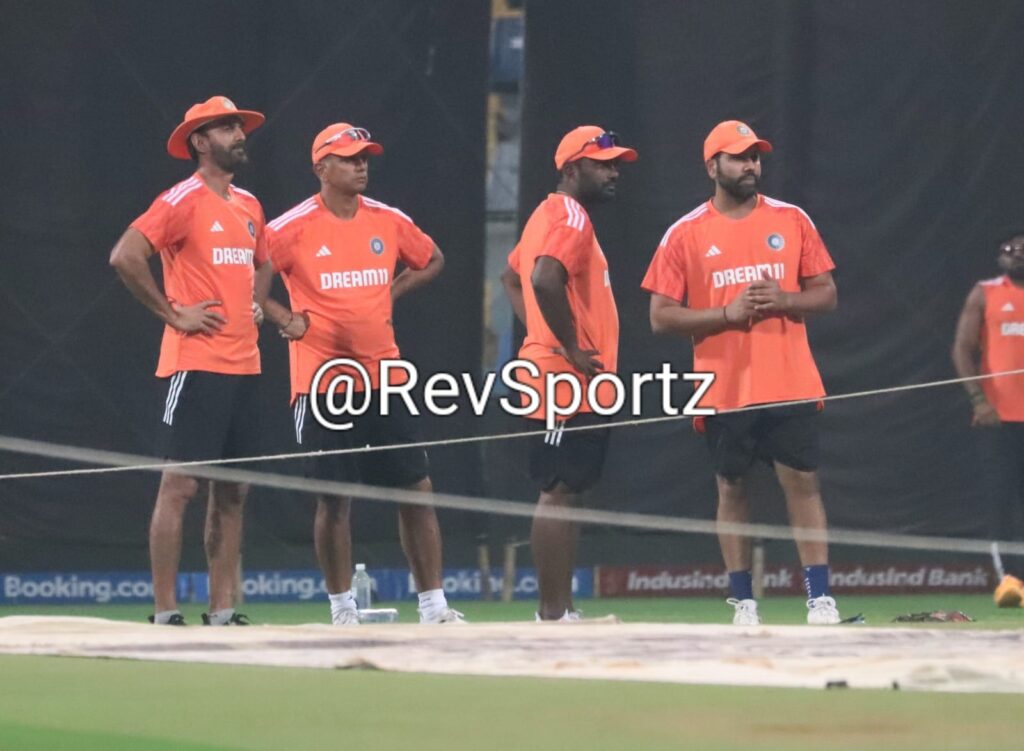
Catches win matches, tosses don’t. Batting first or second has not really been a factor in this World Cup. Teams chasing a target have won 22 matches and teams setting a target 23. The 45 matches played in the league stage could not have seen a more even distribution.
It’s been exactly the same when it comes to India. They won five matches batting second and four batting first. There was no definite preference either. Rohit Sharma won the toss four times. He opted to bowl and bat twice each. This was the best example of a team comfortable doing either.
However, when it comes to the India-New Zealand semi-final at Wankhede Stadium, there is a statistic which might influence the captain winning the toss. In the four matches played in Mumbai, teams batting first have won thrice, by huge margins. The only team to win while chasing were Australia, who required that miraculous double-century from Glenn Maxwell to beat Afghanistan.
This information suggests one uncontrollable that both Rohit and Kane Williamson, his New Zealand counterpart, would like to control, at least in this big match at the venue where India famously chased 275 in the 2011 World Cup final against Sri Lanka.
That memory, again, is not something which should encourage India to go out and bowl first. In knockout games in ICC events in the recent past, they have not done well batting second. In the 2015 World Cup semi-final, the Champions Trophy final in 2017 and the World Cup semi-final in 2019, they lost while batting second. And they won the 2013 Champions Trophy final defending a target.
This, of course, does not prove that the Indian team has a problem batting second in big games. But there are more Wankhede stats from the ongoing World Cup which show that batting first there makes sense. All four games have seen huge, even gigantic, first-innings scores. The average total batting first is an astonishing 357.25. India themselves made 357 against Sri Lanka. Now, that is something no team would like to chase, in any match, forget a World Cup semi-final.
Normally, on pitches good for batting, teams prefer to chase. And in Virat Kohli, India have the greatest-ever exponent of batting second in the history of ODIs. The team has been quite adept at going after totals. In this World Cup, they have quickly assessed the conditions, applied themselves accordingly and gunned down just about everything, even after losing three wickets for two runs against Australia.
But this is not just another game. In the league stage, there is chance to come back after losing a match. In a semi-final, there is bound to be pressure, no matter who you are, or how impressive your record is. If there is a big total on the board, nerves will react differently, maybe slightly feebly. And once you are in a hole, it will be difficult to come out of it.
In the 1987 and 1996 World Cup semi-finals in India, the first being at Wankhede against England, India lost batting second. On both occasions, the pressure of getting there became too much after losing a few wickets. These might have been momentary blips, but they are also historical facts. And this is a reality that the Indian team might consider, especially after looking at the Wankhede history in 2023.
Teams which aspire to win World Cups do not fret over such facts. Nor should they. They have to be prepared for every situation. This Indian team has done exactly that in winning nine out of nine matches. They will be ready for all eventualities, no doubt. Along with that, they will surely be driven by what has been and what might be at the famous venue by Marine Drive.



